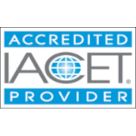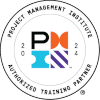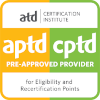Certificate Suite Details
Key Features
- Mobile-friendly
- Audio-enabled
- Badge and credit-awarding
- Real-world case studies
- Fully accessible
- Games & Flashcards
- Expert-supported
- Video content
Certificate Preview
Certificate Description
Learner Feedback
Courses Included in this Certificate
Course Description
Medical marijuana is legal in more than half the states and the District of Columbia (D.C.), and the recreational use of marijuana is legal in many. Yet, federal law still identifies marijuana as an illegal drug. In this course, you will learn about the importance of creating and communicating clear workplace policies that address employee drug use. You will also learn to identify signs that an employee might be impaired and how to address those concerns when they come up. You will have the opportunity to explore the legal status of marijuana in your state.
Course Credits
Course Description
While diversity and inclusion are popular topics in the media and for many progressive organizations, the concepts of diversity and inclusion can be slippery and elusive. What are diversity and inclusion? How are they related to each other? How do you know if your organization is diverse and practices inclusivity? What diversity and inclusion initiatives produce measurable results? In this course, you will examine the concepts of diversity and inclusion and will gain the tools necessary to support an inclusive workplace.
Course Credits
Course Description
In this course, you will explore the importance of developing workplace policies that address unfair gaps in employee pay. You will learn about tools that can help inform those policies—like survey and pay audits—and best practices for their implementation. This course presents federal and state legislation on pay equity, and it provides an opportunity for you to explore your state's laws and how they impact your workplace.
Course Credits
Course Description
Promoting employee well-being is essential for a healthy organization. While this may seem obvious, it can easily be overlooked in an effort to meet other organizational goals. In this course, you will learn what it means to develop a working environment that prioritizes employee health, happiness, and comfort. You will explore various techniques for creating a positive workplace culture and identify common stressors that may threaten employee well-being. You will also learn about the effects employee well-being has on a company's financial success and productivity.
Course Credits
Course Description
Conflict is inevitable in every workplace environment but can typically be resolved with strong leadership and interpersonal communication skills. However, there are times when conflict escalates to a level that puts a worker's well-being or safety at risk. Such dangerous conflict can have devastating effects on an organization, dissolving its focus and resources and even causing it to shut down operations completely. This course will explore the causes and signs of violence in the workplace and will provide tips on how to diffuse dangerous behavior and restore a positive, safe workplace environment.
Course Credits
Course Description
Employers are looking for ways to attract and retain top employees. Employees are seeking working conditions that reflect their needs and wants. By offering the right employee benefits, both employers and employees can reach their goals. In this course, you will learn about increasingly popular employee benefits, including paid leave for new parents, student loan assistance programs, and employer-sponsored volunteerism policies.
Course Credits
Course Description
Successful businesses and organizations rely on workers to perform daily tasks and to keep things running smoothly. Regardless of size, mission, or product, all organizations must determine which roles and responsibilities are necessary to meet business needs. Human resources professionals play a key role in helping organizations assess the number of workers needed, the duties and responsibilities associated with specific roles, and whether or not to hire employees or independent contractors to perform specific tasks. This course provides HR professionals with an overview of different employee classification types, important regulations related to employee classification, and action steps for maintaining compliance.
Course Credits
Course Description
We live in a time where "alternative" work arrangements are becoming more and more the norm. Especially in the wake of the COVID-19 pandemic, companies are exploring new ways of working and are seeing the benefits of greater adaptability as circumstances continue to change and evolve. Both employers and employees can benefit from flexible work arrangements, but offering greater flexibility is not without risk. In this course, you will explore flexible work arrangements, including remote work, flextime, job sharing, compressed workweeks, contracting, gig work, and permanent part-time positions. You will also learn how these flexible work arrangements affect both the business objectives of an organization and the work-life balance of employees.
Course Credits
Course Description
Recruiting multi-generational employees is crucial in a world where more individuals are putting off retirement and making later-in-life career changes. While the benefits of a multi-generational workforce may seem obvious, they can easily be overlooked in an effort to meet other organizational goals. In this course, you will learn the differences between current generations that are working together. You will explore various considerations for attracting, recruiting, and retaining an age-diverse workforce. You will also learn how age-diversity can influence a company's success, innovation, and productivity.
Course Credits
Course Description
What will the future workspace look like? What are the "typical jobs" of tomorrow? How many hours a week will employees work? How will culture and technology affect the future of work? The answers to these questions are based on events, innovation, employer motivation, and the needs, preferences, and composition of the workforce. This course explores the future of work in the context of COVID-19, automation, artificial intelligence (AI), business sustainability, multi-generational workforces, different business models, increasing demand for flexible work arrangements, an evolving organizational culture, and a need for expanded accessibility.
Course Credits
Notes
This course has an "Ask the Expert" feature, which submits your questions directly to an expert in the field you are studying. Questions are answered as quickly as possible and usually within 24 hours.
As an Accredited Provider, MindEdge offers for its learning events that comply with the Continuing Education and Training Standard.
Learners must achieve an average test score of at least 70% to meet the minimum successful completion requirement and qualify to receive credit. Learners will have three attempts at all graded assessments.
Project Management Institute, , the Registered Education Provider logo, Project Management Professional, , Project Management Body of Knowledge, , Agile Certified Practitioner, -, Risk Management Professional, -, the Talent Triangle, and the Talent Triangle logo are marks of the Project Management Institute, Inc.
Information in this course has been taken from A Guide to the Project Management Body of Knowledge, (® Guide) - Sixth Edition, Project Management Institute Inc., 2017.
The following list outlines the you will earn for completing this course, based on the certifications you have.




